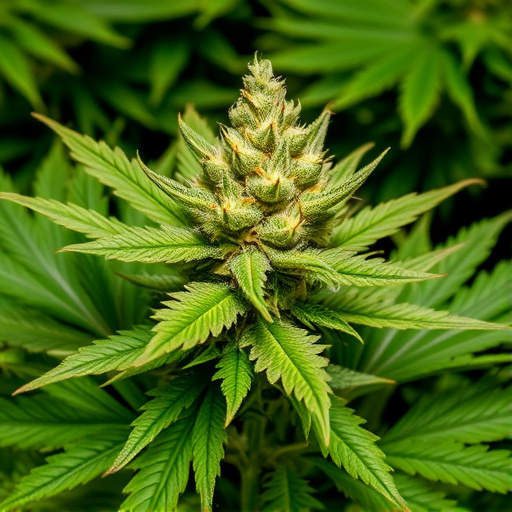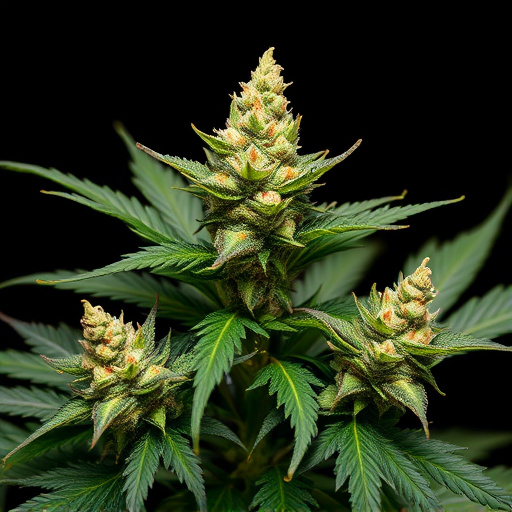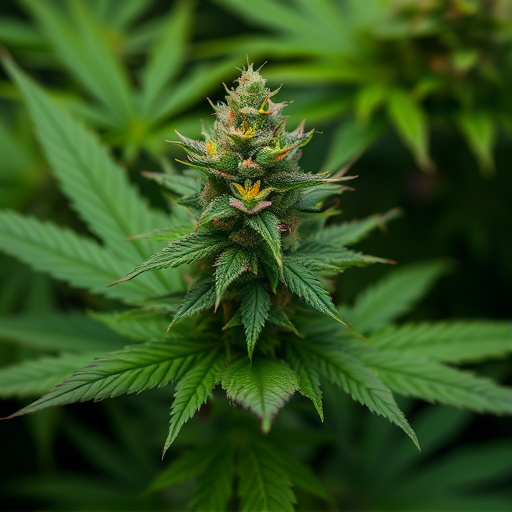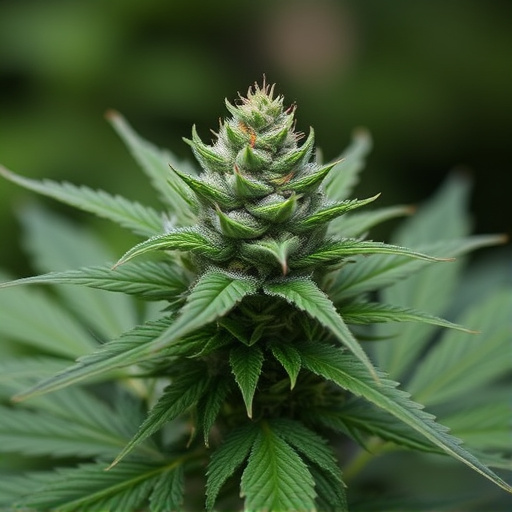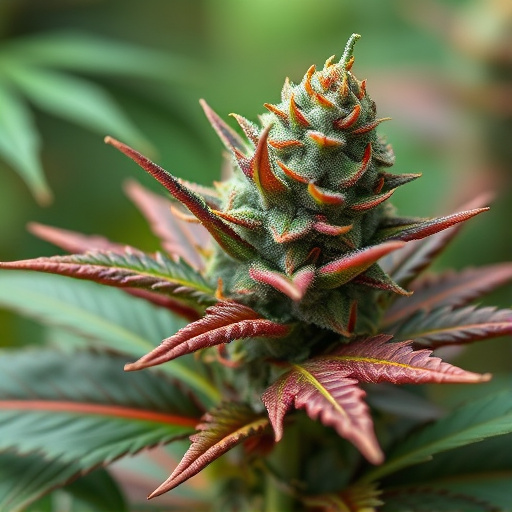The text explores the relationship between cannabis and its effect on appetite, particularly through the compound THC, which stimulates hunger. Cannabis is used as an anxiety reliever, offering comfort and increased appetite. High-CBD cannabis strains are emerging as a new treatment for anxiety, avoiding psychoactive THC effects. Terpenes in cannabis flowers, like linalool and limonene, also interact with the endocannabinoid system to regulate appetite. Understanding strain composition is vital for maximizing therapeutic benefits and managing side effects, especially for individuals with anxiety-related eating disorders.
Curious about why cannabis can stimulate your appetite? This guide unravels the complex interplay of cannabinoids, terpenes, and how they affect hunger. We delve into the science behind THC’s impact on appetite, explore CBD-rich cannabis strains as natural anxiety remedies, and uncover terpenes that may help curb cravings. By understanding these elements, you’ll gain insights to choose cannabis strains for anxiety management tailored to your needs.
- Understanding the Cannabinoid THC and Its Effects on Appetite
- Cannabis Strains High in CBD and Their Role in Managing Anxiety and Hunger
- Exploring Terpenes and Their Impact on Cravings
Understanding the Cannabinoid THC and Its Effects on Appetite
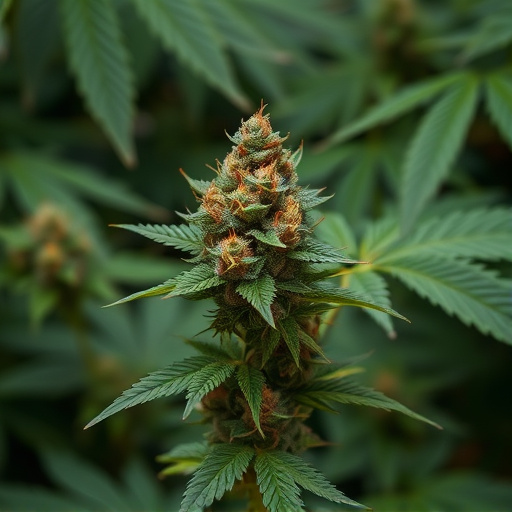
The connection between cannabis and increased appetite is well-documented, particularly in relation to its primary psychoactive compound, tetrahydrocannabinol (THC). THC interacts with the endocannabinoid system (ECS), a complex network of receptors located throughout the body that regulates various physiological processes, including hunger. When THC binds to these receptors, it can stimulate appetite, leading many users to report increased hunger shortly after consumption. This effect is particularly noticeable for those seeking cannabis strains for anxiety or stress relief, as the subsequent boost in appetite can provide a comforting counterbalance.
Beyond its direct interaction with the ECS, THC also influences neurotransmitters like serotonin and dopamine, which play key roles in regulating mood and reward systems. These indirect effects can further contribute to the enhanced appetite associated with cannabis use. Understanding these mechanisms sheds light on why many people turn to specific cannabis strains for anxiety management, leveraging both the direct and indirect actions of THC to promote overall well-being.
Cannabis Strains High in CBD and Their Role in Managing Anxiety and Hunger
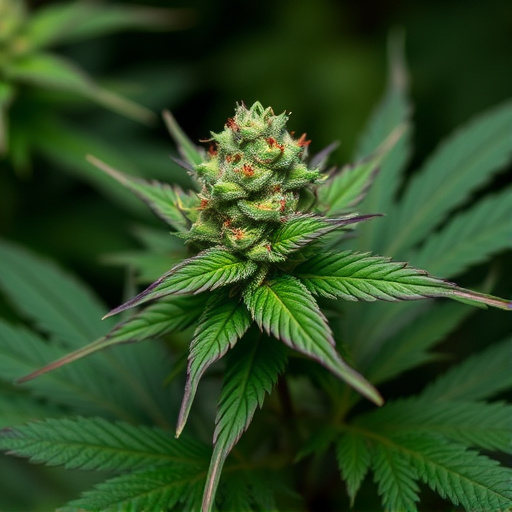
Cannabis has long been recognized for its potential in managing various conditions, with cannabis strains high in CBD emerging as a game-changer in the field of anxiety relief. Unlike THC, CBD (cannabidiol) does not induce psychoactive effects, making it a popular choice among those seeking to alleviate symptoms of anxiety and stress without getting high. Research suggests that CBD interacts with the endocannabinoid system in our bodies, which plays a crucial role in regulating mood, appetite, and pain. This interaction can help reduce feelings of anxiety and, interestingly enough, stimulate hunger.
While cannabis strains for anxiety are becoming more prevalent, understanding the specific compounds within these strains is essential. CBD-rich varieties often include low levels of THC or none at all, minimizing potential psychotic effects while maximizing the calming and appetite-stimulating benefits. This combination can be particularly beneficial for individuals dealing with anxiety-related eating disorders, as it may encourage a healthier relationship with food.
Exploring Terpenes and Their Impact on Cravings
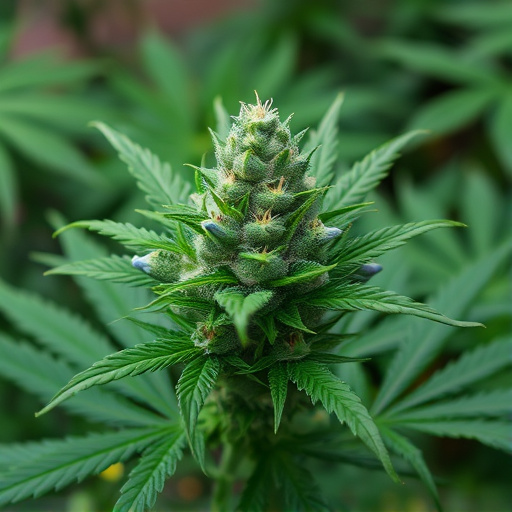
Cannabis flowers contain a diverse range of terpenes, aromatic compounds that contribute to their distinct scents and flavors. Among these, certain terpenes like linalool and limonene have gained attention for their potential effects on mood and cravings. Studies suggest that these terpenes found in many cannabis strains for anxiety can interact with our bodies’ natural endocannabinoid system, influencing appetite and food cravings.
When consumed, terpenes can modulate the effects of tetrahydrocannabinol (THC), the primary psychoactive compound known for its hunger-inducing properties. Some terpenes may even counteract THC’s appetite-stimulating effects, leading to a more balanced experience. Understanding the interplay between terpenes and our sensory systems offers insights into why different cannabis strains can evoke varied responses, including changes in dietary preferences.
Cannabis’ impact on appetite is a complex interplay of various compounds, including THC, CBD, and terpenes. Understanding these elements is crucial for navigating the effects on hunger, especially when considering cannabis strains for anxiety management. While THC stimulates appetite, CBD-rich strains can help mitigate cravings and reduce anxiety. Terpenes further enhance these effects, offering a nuanced approach to managing both mental well-being and food desires. By exploring these components, individuals can make informed choices to best support their needs.

